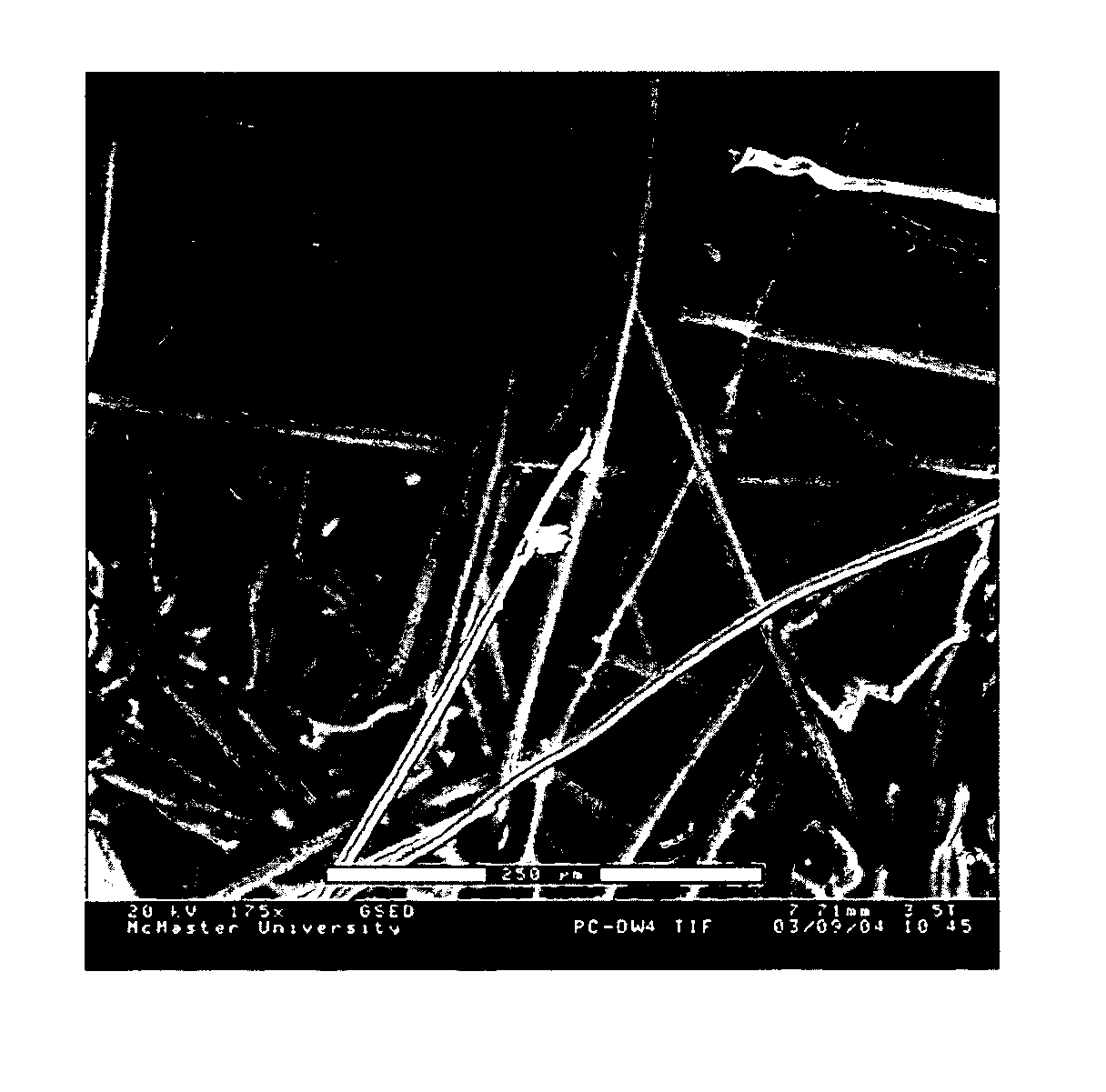Pervaporation composite membranes
- Summary
- Abstract
- Description
- Claims
- Application Information
AI Technical Summary
Benefits of technology
Problems solved by technology
Method used
Image
Examples
example 1
[0071] This example illustrates the preparation of composite membranes of the invention using either a thermal- or a photo-initiated method.
Thermally-Initiated In Situ Polymerization:
[0072] In this example, the anionic monomer used was methacrylic acid, sodium salt (MAAS), the cationic monomer was diallyldimethyl ammonium chloride (DADMAC). The mole ratio of DADMAC / MAAS was 4:1. The cross-linker used was N,N′-methylenebisacrylamide (MBAA), the amount of MBAA used was 3% based on the total molar amount of monomers. Ammonium persulfate was used as the thermal initiator, its amount was 1.0% of the total weight of monomers. Mixing the above chemicals and diluting them to 50% monomers concentration, stirring the mixture for 0.5-2 hrs till all solids are dissolved in water. After filtration to remove any undissolved solid by filter paper, the mixture was ready to prepare the membrane.
[0073] A CA microfiltration membrane with a pore size of 0.8 μm and a porosity of 72% was used as supp...
example 2
[0078] This example illustrates the use of an asymmetric membrane as support member to prepare pervaporation membrane of this invention.
[0079] In this example, A PAN HV1,1 / T ultrafiltration asymmetric membrane was used as support member, its mean pore size is 0.0246 microns as specified by the provider. The cationic monomer was [2-(methacryloxy)ethyl]trimethylammonium chloride (MAETAC), the anionic monomer was methacrylic acid (MAA). Their mole ratio was 4:1. MBAA was used as cross-linker, its amount was 3% of the total moles of monomers. Photo initiator Irgacure 2959 was taken, its amount was 0.5% of the total weight of monomers. The concentration of the monomers in the solution was 60 wt. %. The membrane was prepared in accordance with example 1 using the photo-initiated method.
[0080] When dealing with 89.2% IPA / water at 75° C. in pervaporation test, the membrane has a flux of 2.35 Kg / m2 hr and the permeation water content is 97.0 wt. %.
example 3
[0081] This example demonstrates the effect of anion / cation mole ratio on the performance of pore-filled membranes.
[0082] A series of membranes were prepared with different anion / cation mole ratio. The anionic and cationic monomers were MAA and 3-(acrylamidopropyl)trimethylammonium chloride (APTAC), respectively. Six anion / cation mole ratio, i.e., 0:100, 20:80, 40:60, 60:40, 80:20, 100:0, were used. The total concentration of the monomers in solution was 65 wt. %. All other conditions were the same as example 1 using the photo-initiated polymerization method.
[0083] These membrane were tested with 90.9 wt. % IPA / water and the results are shown in FIG. 3. In the whole mixture range, anion / cation copolymer filled membranes have both higher flux and higher selectivity than MAA filled membranes. When the cation content in monomer solutions higher than 50 mol. %, the flux and selectivity of prepared membranes are higher than those of only anion or cation filled membranes.
PUM
| Property | Measurement | Unit |
|---|---|---|
| Thickness | aaaaa | aaaaa |
| Thickness | aaaaa | aaaaa |
| Thickness | aaaaa | aaaaa |
Abstract
Description
Claims
Application Information
 Login to View More
Login to View More - R&D
- Intellectual Property
- Life Sciences
- Materials
- Tech Scout
- Unparalleled Data Quality
- Higher Quality Content
- 60% Fewer Hallucinations
Browse by: Latest US Patents, China's latest patents, Technical Efficacy Thesaurus, Application Domain, Technology Topic, Popular Technical Reports.
© 2025 PatSnap. All rights reserved.Legal|Privacy policy|Modern Slavery Act Transparency Statement|Sitemap|About US| Contact US: help@patsnap.com



